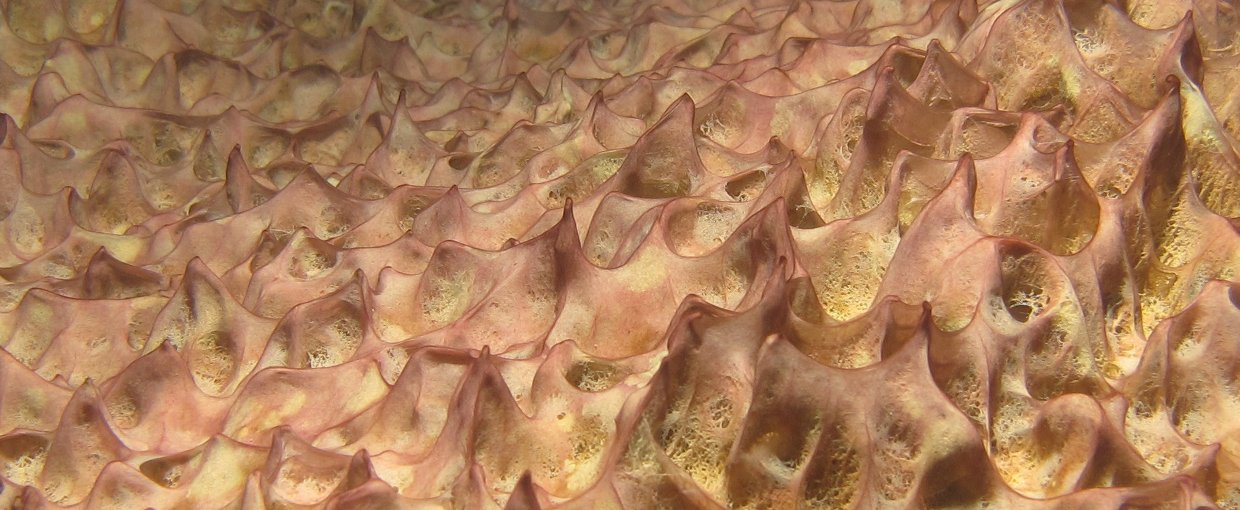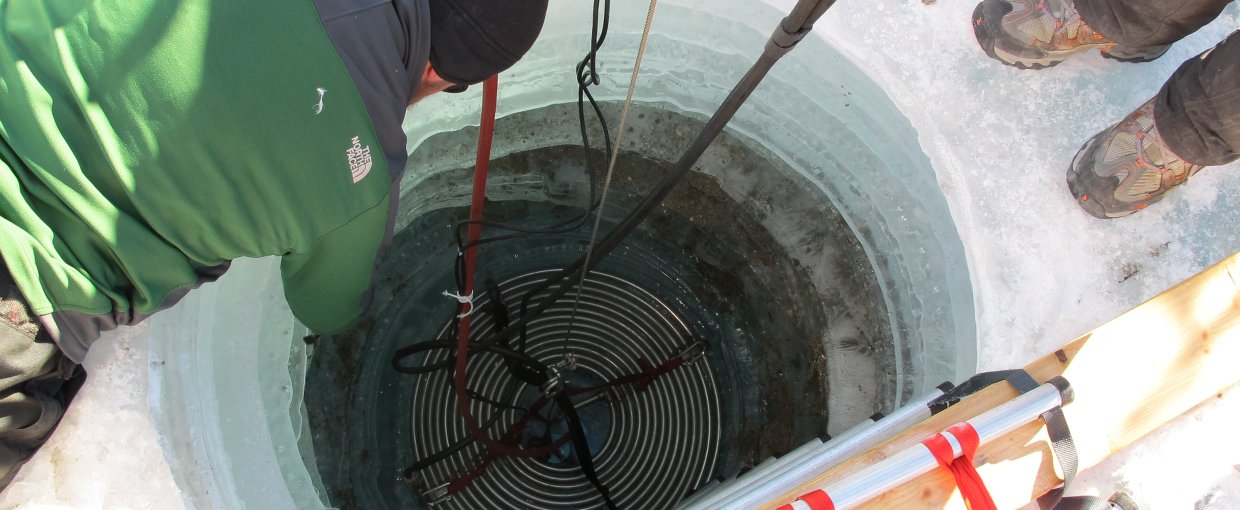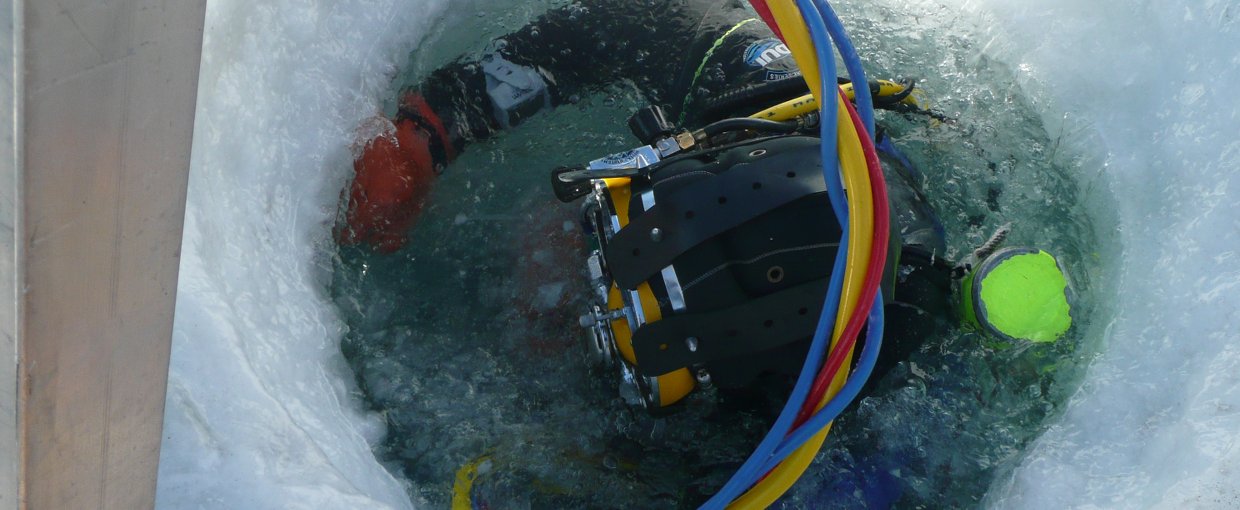
Ancient clusters of rock that preserve some of the oldest microbes on Earth occasionally possess mysterious branch-like formations. Now, scientists think they know what might have caused this enigmatic branching — changes in microbial activity in the shallow lakes and seas where life first evolved.
These findings, published in the July issue of the journal Geobiology, could help researchers decipher potential signs of primitive life on distant planets, scientists said.
“Most of the history of life on Earth was dominated by microbial life, and if we want to anchor our understanding of microbial evolution to this history of life we need to look at what information we can pull out of the sedimentary record,” said study lead author Tyler Mackey, a geo-biologist at the University of California, Davis.
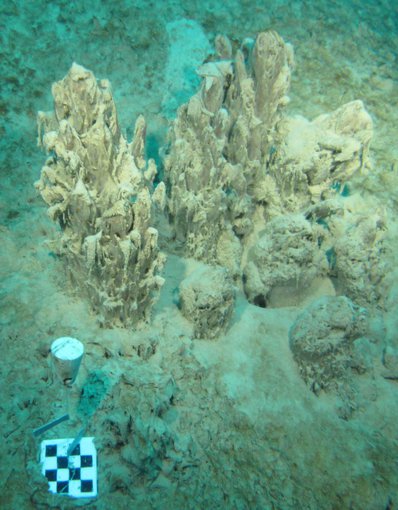
This is a stromatolite with well-developed branches from about 22 meters in Lake Joyce.Image credit: Tyler Mackey.
Stromatolites, meaning “layered rock” in Greek, are dome-shaped clumps of rock layered a bit like cabbage leaves. These fossils were created by ancient mats of microbes that grew layer by layer as successive generations of microorganisms glommed onto sand and minerals.
Stromatolites are among the most ancient signs of life on Earth, forming as far back as 3.5 billion years ago. If such mounds are detected on Mars and other distant planets, they could potentially be a sign of primitive microbial mats.
“Microbes very rarely fossilize well, and even when they do, the shapes of the microbes don’t necessarily tell us much about the lifestyle of the organisms,” Mackey said. “The overall shape of microbial mats, however, is much more likely to be preserved.”
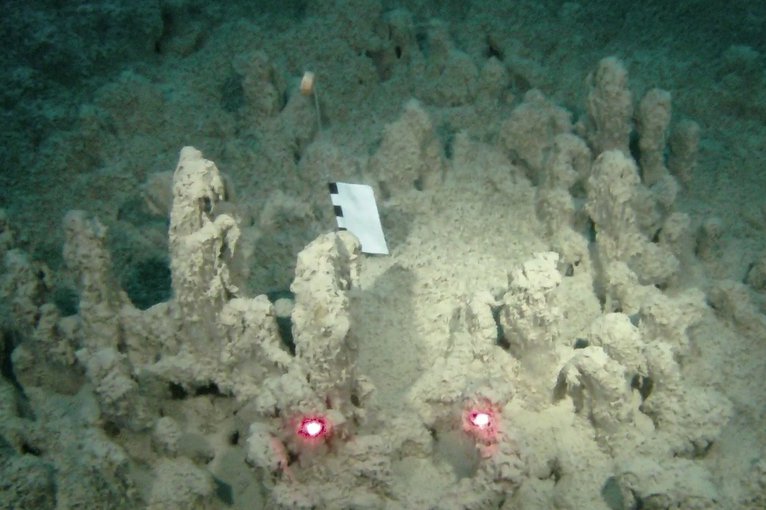
Examples of stromatolites from Lake Joyce; the laser points are spaced 10 cm apart.Image credit: Tyler Mackey.
Stromatolites can preserve signs of these mats, he explained.
The shape of stromatolites is intimately linked to environmental and microbial activity. These shapes varied over time, potentially shedding light on how the ancient world changed over the course of millions of years.
During the Proterozoic — the eon 2.5 billion to 540 million years ago before multicellular life appeared — some stromatolites grew branched formations rather than simple flat layers. The branches varied in shape, the degree of divergence from the underlying stromatolite, and whether the branches themselves branched.
Branches also varied in abundance over time, potentially serving as markers of long-term environmental changes and microbial evolution. However, the environmental and biological processes responsible for different stromatolite shapes are difficult to deduce from fossil stromatolites. Studies of modern microbial mats could yield insights into the factors that cause specific variations in stromatolite shape.
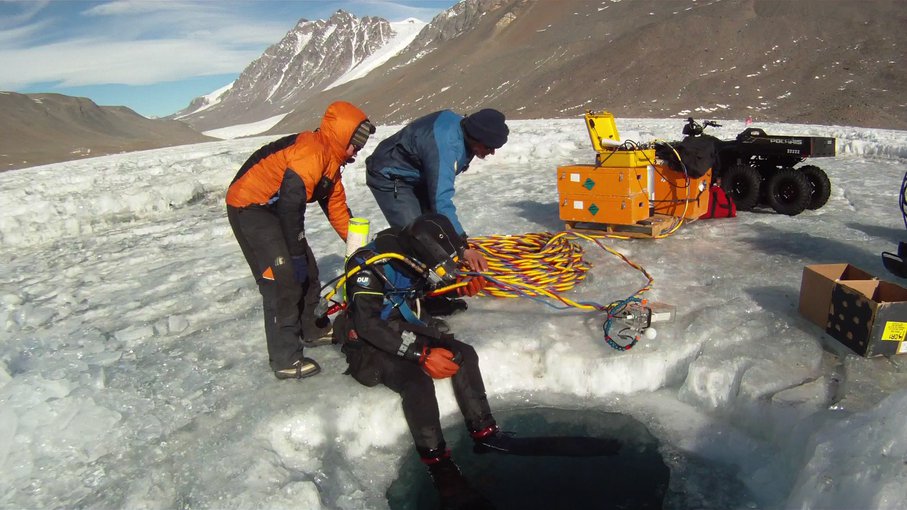
Getting ready to dive at nearby Lake Hoare.Image credit: Tyler Mackey.
Mackey and his team analyzed mounds of microbial mats in the permanently ice-covered Lake Joyce in the McMurdo Dry Valleys in Antarctica. The researchers called them stromatolites even though they have not fully transformed into stone yet.
These modern stromatolites were created by photosynthesizing cyanobacteria — microbes that create their own energy by turning solar energy into chemical energy. These stromatolites were photosynthetically active as recently as 1997, and consist of layers of the mineral calcite and of mud. The researchers melted holes in the lake’s ice, allowing divers to collect stromatolites from depths of 6 to 22 meters.
“Working in a site like Lake Joyce is both exhilarating and challenging because everything is new,” Mackey said.
“There are so many observations that could be made, samples that could be collected. We need to maintain a balance between collecting samples that can test a hypothesis and being open to the unexpected.”
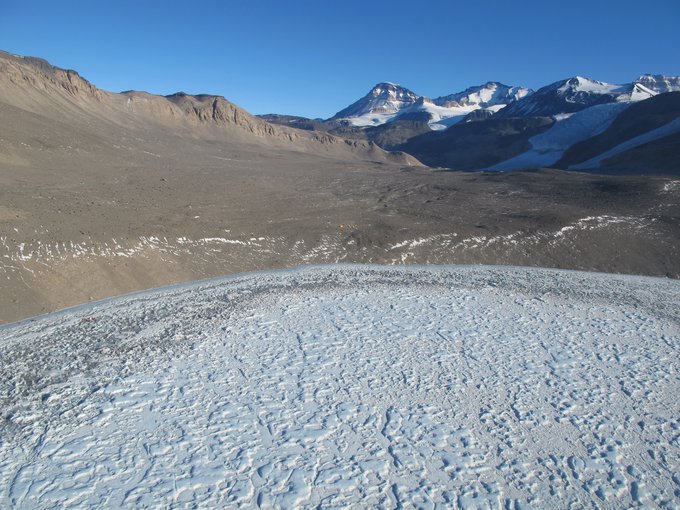
Photo of Lake Joyce from a helicopter ride in.Image credit: Tyler Mackey.
Divers were tethered to an air supply and two-way voice communications with the surface.
“Work on tether can be a bit awkward, but we have the support of everyone on the surface to get the job done,” Mackey said. “We can read out observations, get reminders on sampling targets and protocols, and request feedback when faced with unexpected circumstances.”
Most of the stromatolites the scientists collected were 2 to 3 centimeters in diameter, with rare larger columns up to 6-centimeters wide. Eight of the 10 stromatolites branched, possessing either petals or branches on their sides or crowns.
The scientists found that the cyanobacterium species Phormidium autumnale led to smooth microbial mats, while absence of this microbe led to mats with small peaks and tufts. This bacterium was rare below depths of about 12.5 meters.
The researchers suggested that P. autumnale normally helped keep microbial mats smooth. However, rises in lake level could increase the amount of branching by suppressing P. autumnale, resulting in tufted mats that could serve as the basis for branched stromatolites.
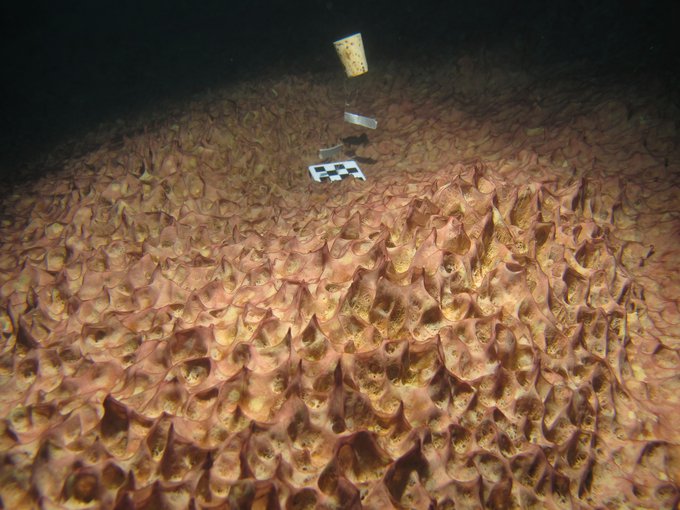
Photo of mats from Lake Joyce; checkered scale markings are 1 cm.Image credit: Tyler Mackey.
“Understanding how life on Earth developed and was preserved helps us develop a search pattern for records of life on other planets in our solar system,” Mackey said.
“If we were to find some ambiguous squiggly layers in sedimentary rocks on Mars, we would have a very high burden of proof to determine their origin, much less to actually say whether these were due to microbial communities. Microbial mat growth models like the one we have outlined here are a necessary step in developing interpretations of microbial community activity from the sedimentary record.”
The study was supported by the Exobiology and Evolutionary Biology element of the NASA Astrobiology Program.
